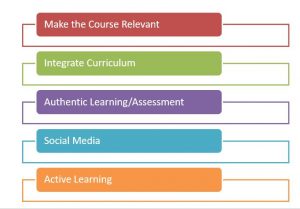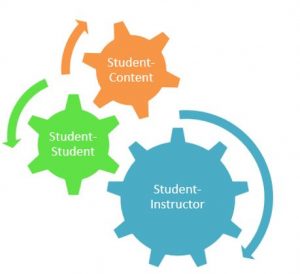Faculty provide active learning experiences for students and consider opportunities for student reflection of their learning.

Make the course relevant: Students want courses to be relevant and meaningful. Use real-world examples to teach; where the course is relevant to a specific occupation, ensure it is aligned with the current needs of the occupation.
Integrated curriculum: Combine disciplines rather than compartmentalizing subjects. Some medical schools, for example, have moved away from teaching subjects in isolation such as physiology and anatomy, and moved toward studying organ systems where students learn the physiology and anatomy associated with that system.
Authentic learning experiences: Students tackle real-world problems and attempt to come up with a solution through methods such as inquiry and experimentation. Ideally, the solution will benefit others or the community. Experiential learning—when students learn from reflecting on their real-world learning experience—is a further development of this, and is an effective teaching strategy. Assess early and often for formative. Problem-based/project-based learning: Students are tasked with solving a problem or completing a project, but the focus is on the end product, allowing students to determine what resources are needed to solve the problem or complete the project.
Social media: Potential uses for social media include sharing relevant content, posting instructional videos on YouTube and facilitating ongoing discussion groups. However, strict guidelines for use must be put in place and enforced. (Twitter, LinkedIn, Instagram…)
Active Learning: leads to deeper learning and ties to higher order cognitive skills in Blooms Taxonomy and achievement of your learning outcomes. View our curated collection of active learning strategies.
Consider reflection and writing assignments to keep students engaged in class as well as improve thinking skills.


